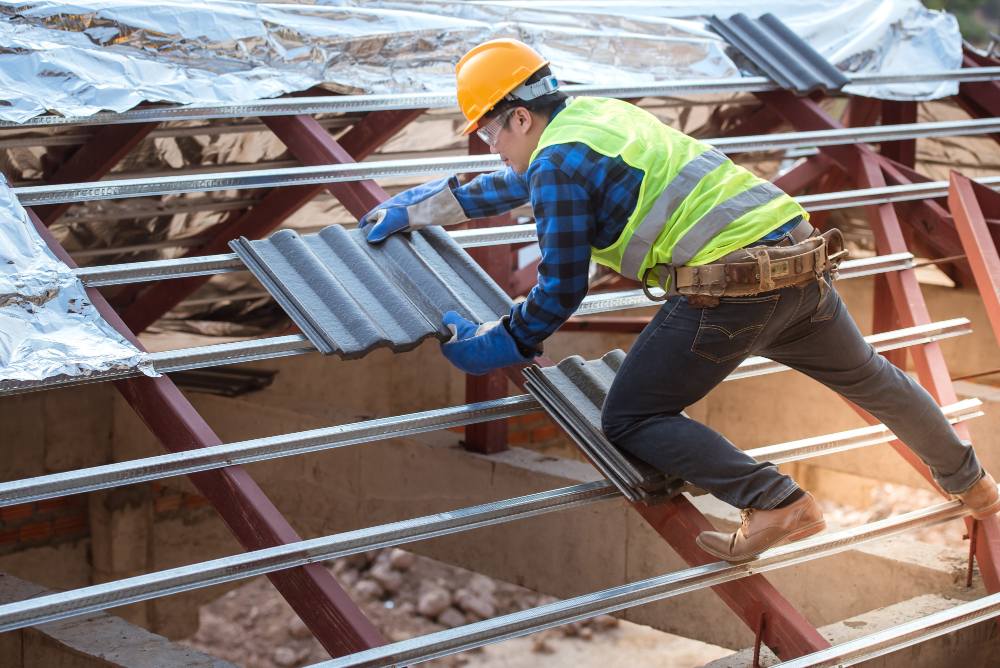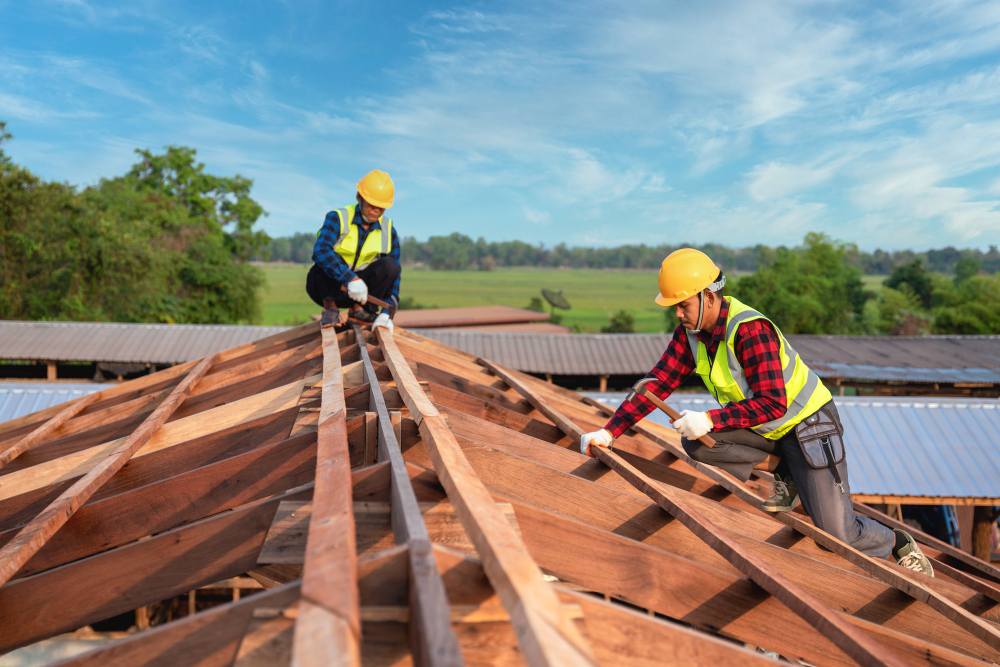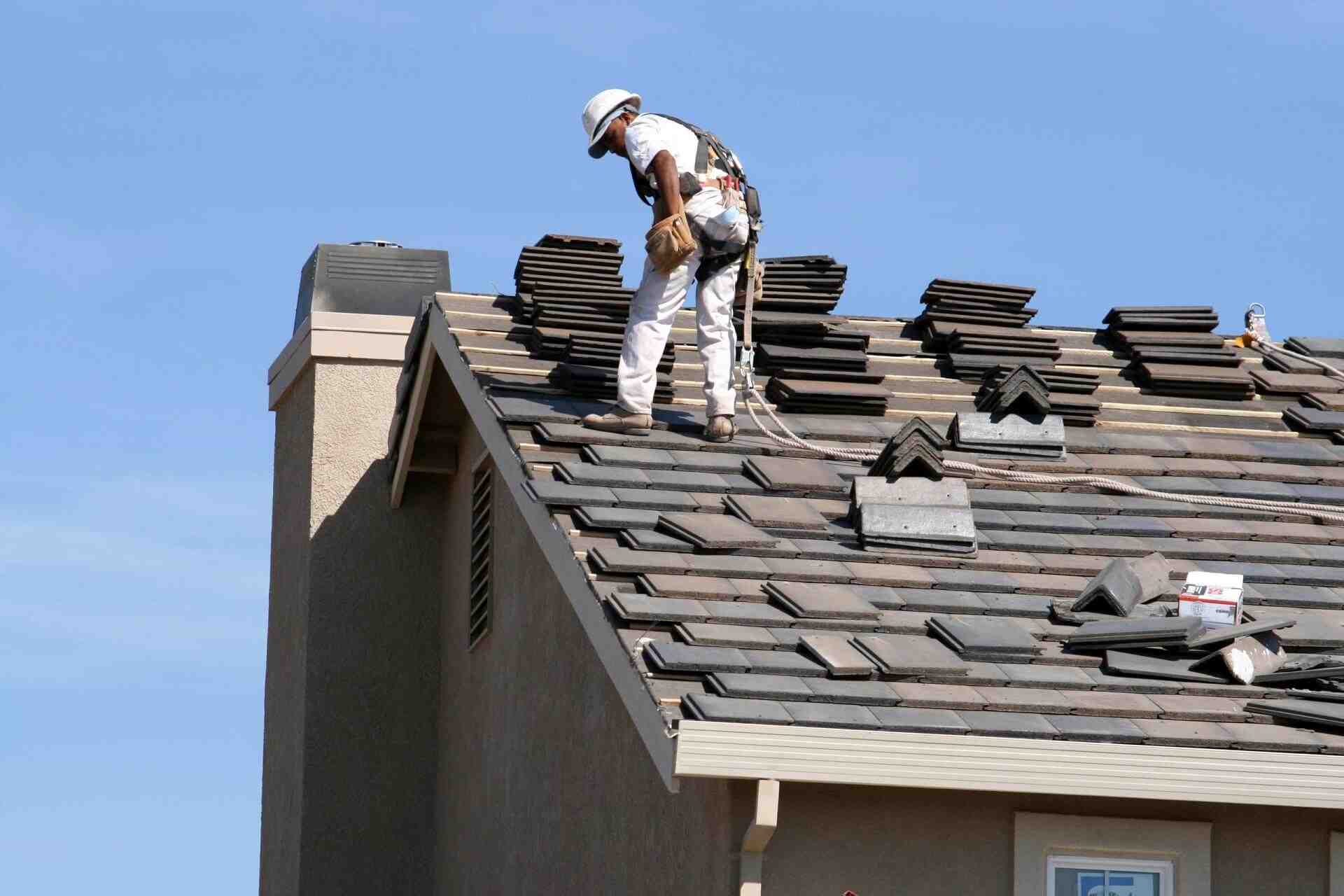Lead Roofing in Bexley
Table of Contents

A property’s roofline plays a critical role in protecting its structure, and soffits are an integral part of this system. Positioned beneath the roof overhang, soffits provide essential ventilation to the attic space while shielding rafters from moisture, pests, and weather damage. For many homes in Bexley, where properties range from older Victorian terraces to modern detached houses, well-maintained soffits are vital to ensure both functionality and aesthetic appeal.
Positive Roofing provides professional soffit repair services in Bexley, offering reliable, compliant, and long-lasting solutions. By addressing issues such as cracks, rot, or inadequate ventilation, the company ensures that homeowners receive both immediate relief and long-term protection for their properties.
The Importance of Soffits in Roofline Systems
Soffits may appear to be purely decorative, but they perform a vital structural and functional role:
Ventilation. Properly designed soffits allow airflow into the roof space, reducing condensation and minimising the risk of dampness and mould growth.
Protection. They shield exposed rafters and beams from rain, wind, and pests, helping to preserve the integrity of the roof structure.
Energy efficiency. By supporting ventilation and insulation balance, soffits contribute to maintaining indoor comfort and reducing heating costs.
Aesthetic appeal. Soffits provide a neat and finished look to the roofline, enhancing the property’s kerb appeal.
Given these benefits, neglecting soffit maintenance or repairs can lead to costly damage. According to recent UK property surveys, roofline issues, including damaged soffits and fascias, account for over 15% of reported roofing defects.
Common Problems with Soffits
Over time, soffits can deteriorate due to exposure to weather conditions, poor installation, or lack of maintenance. Common issues observed in Bexley properties include:
Rotting timber soffits caused by long-term moisture exposure.
Cracked or warped uPVC soffits due to ageing or thermal stress.
Blocked or inadequate ventilation leading to condensation in roof spaces.
Pest intrusion, as birds, insects, and rodents exploit gaps in damaged soffits.
Discolouration or staining, affecting the visual appeal of the roofline.
Left unresolved, these problems can escalate into structural damage, compromised insulation, or infestations. Timely soffit repairs are essential to prevent such outcomes.
Professional Soffit Repairs by Positive Roofing
Positive Roofing offers a comprehensive soffit repair service in Bexley, ensuring that every project is tailored to the specific property and its requirements. The repair process typically involves:
Initial inspection. A full survey of the soffits, fascias, and roofline is conducted to identify defects and assess the extent of damage.
Material assessment. Timber, aluminium, or uPVC soffits each require different repair techniques. Positive Roofing’s team ensures that the appropriate method is applied.
Repair or replacement. Where possible, damaged sections are repaired. If replacement is required, durable and low-maintenance materials such as uPVC are recommended.
Ventilation improvements. Repairs often include the installation of ventilated soffit boards to ensure compliance with current building regulations.
Finishing touches. All work is completed with a focus on durability, safety, and aesthetic consistency with the property’s architecture.
This professional approach guarantees that the soffit system not only looks visually appealing but also performs its protective and ventilating role effectively.
Compliance and Safety in Soffit Repairs
Roofline work, including soffit repairs, must comply with Building Regulations Part F (ventilation requirements) and Part C (resistance to contaminants and moisture). Positive Roofing ensures that all repairs and replacements meet these standards, supporting both structural health and occupant safety.
Health and safety compliance is also a priority, with all works conducted using appropriate access systems, protective equipment, and safe working practices in line with industry regulations.
Why Homeowners in Bexley Need Timely Soffit Repairs
Bexley properties are subject to weather variations that place pressure on roofing systems, particularly during wet winters. Homeowners who ignore soffit damage may face:
Increased dampness in roof spaces.
Escalating repair costs due to structural timber decay.
Reduced energy efficiency from inadequate ventilation.
Decreased property value, as surveyors often highlight roofline issues during property sales.
Research indicates that regular roofline maintenance can extend the lifespan of timber elements by up to 50%, while modern uPVC soffits offer service lives of over 25 years when properly maintained.
Benefits of Choosing Positive Roofing
Positive Roofing has become a trusted name in Bexley for roofline and soffit services, thanks to its commitment to quality workmanship and client satisfaction. The benefits of working with Positive Roofing include:
Local expertise, with extensive experience across Bexley’s property types.
Tailored solutions, ensuring repairs meet individual needs and budgets.
Durable materials, from treated timber to maintenance-free uPVC options.
Transparent quotations, providing clear costs and scope of work.
Aftercare support, including advice on future maintenance.
By combining technical knowledge with professional service, Positive Roofing ensures that soffit repairs in Bexley are completed to the highest standard.
Conclusion
Soffits are a critical component of any roofline system, delivering protection, ventilation, and aesthetic value. Neglected or damaged soffits can lead to structural damage, pest intrusion, and increased maintenance costs.
Positive Roofing offers reliable and professional soffit repair services in Bexley, addressing both minor damage and full replacements. By ensuring compliance with building regulations and using durable materials, the company provides homeowners with long-term peace of mind.
For homeowners seeking dependable roofline solutions, Positive Roofing remains the trusted choice in Bexley.


Step-by-Step Process: Building a Flat Roof
Now that you comprehend the layers and layout, here is a step-by-step construction procedure to build your flat roof effectively.
Step 1: Frame the Roof
Begin with the framework. Ensure your framing allows for the needed slope. The slope may be directed toward scuppers or other drainage points, depending on the roof’s shape. In certain circumstances, the slope resembles a flattened hip roof, designed to channel water from various directions.
Step 2: Install the Sheathing
Lay down plywood or OSB panels over the frame. Utilise 5/8 inch thick sheets, and make sure to leave a 1/8 inch gap between them to enable expansion and contraction due to temperature variations.
Step 3: Apply the Underlayment and Iso Board
The underlayment acts as an added water barrier. Once it is secured, add the iso board—a rigid foam insulation (generally 1/2 inch thick) with a fibreglass backing. The Iso board is straightforward to cut and offers a seamless, protective base for the waterproof membrane. Place the panels firmly, stagger the seams, and screw them in utilisng galvanised steel washers.
To prevent pooling at inner corners (where the roof meets the parapet), install beveled strips utilising 2x4s ripped at a 45-degree angle. This crafts a gentle transition that water can flow over seamlessly.
Step 4: Dry-Fit the Roofing Membrane
Prior to glueing anything, clean the surface exhaustively. Debris may puncture the membrane. If using EPDM (ethylene propylene diene monomer) rubber, cut it with shears or a utility knife. Lay the sheet across the roof, leaving about 9 inches of excess around the perimeter. On tiny roofs, one piece might be sufficient; for bigger roofs, overlap by 6 inches but hold off on gluing seams just yet.
For vent stacks, trim a hole in the membrane just slightly bigger than the pipe, then slide it over.
Step 5: Secure the Waterproofing Membrane
Start adhering the EPDM membrane to the insulation layer. Smooth it down section by section, using a dry roller to remove air pockets. Cautiously glue the edges up the parapet walls and down the front edge by no less than 6 inches.
Where seams are required, clean the area with solvent, apply rubber adhesive, and cover with a 12-inch strip of uncured rubber. This type of rubber can stretch and mould into place without snapping back, guaranteeing a sturdy seal.
Step 6: Finalise the Edges
At vertical corners, overlap and glue down the EPDM tightly. Strengthen these areas with uncured rubber for additional protection. Utilise termination bars (metal strips) to keep the membrane from peeling off vertical surfaces. Run a bead of tri-polymer caulk along the top of the termination bar for a watertight finish.
Finish the roof’s edges utilising galvanised or lead-coated flashing. This is usually referred to as a gravel stop and comes in multiple finishes. Nail the flashing in place, then cover the upper edge with another strip of uncured rubber for additional protection.
Common Flat Roof Material Options
When choosing a flat roof, it is necessary to consider different material’s strengths and possible drawbacks. Here is a breakdown of the most commonly used options:
Hot Tar and Gravel
Usually selected for industrial buildings, hot tar and gravel roofs are built to last. They are celebrated for their durability and minimum maintenance requirements. Nevertheless, their installation can be expensive because of the large volumes of tar and gravel needed.
Modified Bitumen
Modified bitumen roofs are more cost-effective alternative to hot tar systems. They provide dependable performance, but they do demand regular maintenance to stay in perfect condition with the passage of time.
Asphalt Shingles
Asphalt shingles are one of the most budget-friendly options available. They are straightforward to install and maintain, though their service life is usually shorter than that of other flat roofing materials, particularly in flat or low-slope settings.
Metal Roofing
Constructed from metal panels, this roofing type mimics the appearance of conventional slate or tile. It is a favourite option for its remarkable strength, fire resistance, and sleek, contemporary appearance, making it a durable option for both domestic and commercial use.
Fibreglass
Lightweight and effortless to handle, fibreglass roofing is gaining attention for its simple application and minimum maintenance requirements. It is a convenient option for individuals seeking an effective and economical solution, specifically since it does not need ventilation openings.
Rubber Membrane (EPDM)
Created from synthetic rubber, EPDM membranes are swift to install and straightforward to repair. They are an affordable option and work efficiently in most flat roof applications, though they can be vulnerable to damage from severe atmospheric conditions.
Major Considerations Before You Build
Building a flat roof takes more than materials and manpower. Here is what else you require to take into account:
- Load-Bearing Capability: Guarantee your deck can manage both the dead load and any expected live loads, such as snow or foot traffic.
- Weather Conditions: In chilly climates, a steeper slope might be required. In hot regions, reflective membranes can aid in controlling heat.
- Building Regulations: Always comply with local building codes for slope, insulation, and material standards.
- Ventilation: Sufficient airflow avoids condensation, mould, and rot inside the roof layers.
Retaining and Extending the Life of Your Flat Roof
Flat roofs last longer with adequate care. Conduct biannual inspections—in spring and fall—to identify problems such as:
- Pooling water
- Surface blisters
- Seam lifting or separation
- Blocked drains
Swiftly fixing small problems can avoid substantial damage and extend the roof’s service life considerably.
To Sum Up!
Constructing a flat roof requires accuracy, proper layering, and a deep understanding of drainage and materials. When done right, it not only safeguards your building but also improves its usability and style. Whether you are working on a home, extension, or commercial property, this comprehensive and informative guide equips you with the essentials.
For professionally built flat roofs that stand the test of time, rely on the seasoned crew at Positive Roofing—your partners in quality roofing solutions.
